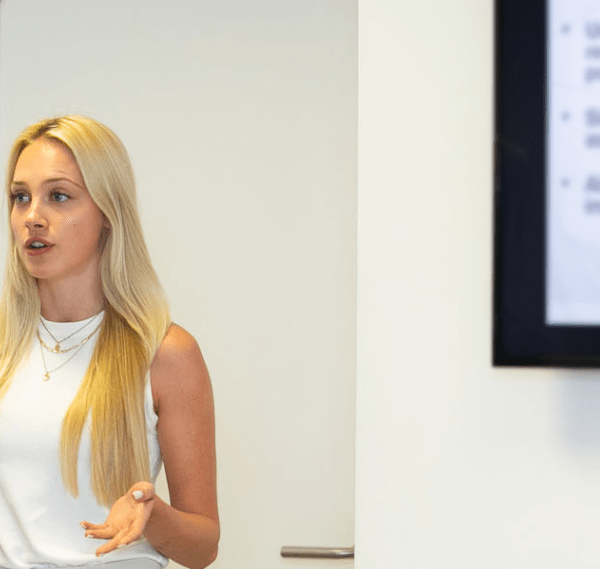Students should feel encouraged, secure, and at home in their institution of higher education. However, due to both visible and invisible barriers, that may not be their current experience.
It’s a university’s responsibility to take specific measures to change this situation for the better. Here are some ideas they may consider to make their learning environments more inclusive and accessible.
Provide financial advice and support
The cost of accessing further education is one of the main obstacles faced by students from underrepresented groups. If a degree is prohibitively expensive, it immediately excludes those who are less resourced.
One way universities can make studying more financially inclusive is to offer cost-effective alternatives. For example, they may provide cheaper online options for students who can’t afford in-person courses.
They may also offer scholarships to students who would otherwise struggle to pay for their university education. Since the beginning of university is often the first time young people must manage their living expenses, providing financial education could also be beneficial.


Create an inclusive learning environment
An inclusive learning environment should, first of all, consider the needs of differently-abled demographics. It should be physically accessible and comfortable for all. If students require specific accommodations to study, the university should make a concerted effort to meet their needs.
When considering accessibility and inclusivity, universities should also consider people whose mental health may make conventional attendance more complicated. Flexible class times and access to online resources can support their ongoing participation.
Lastly, universities should think about the different learning styles students may possess. Courses should be designed with this diversity in mind, blending a range of methods to maximize engagement. Everyone’s unique skillsets should be respected and celebrated in the classroom.
Use technology thoughtfully
If technology is used in a course, universities must ensure that every student has access to this technology and that they’ve received sufficient education to use it appropriately. Assumptions should be avoided regarding students’ level of digital literacy.
Technology can be used to make the course more accessible. For example, students who are learning in their second language may benefit from subtitled video recordings of lectures. Likewise, students who struggle to participate orally in class may be empowered through technology that allows them to make written contributions in real-time.
Encourage groups to share their perspectives
Universities can learn how to better meet the needs of underrepresented groups by providing them with a platform to connect and share experiences. For example, students from black and minority ethnic communities or LGBTI+ students might meet up either virtually or in person at university-organized events.
This is a valuable initiative for three reasons. First of all, it shows that the university is open to the perspectives of people from diverse backgrounds, as it is a concrete step that shows a commitment to inclusivity.
Secondly, it also creates a space for these students to develop constructive feedback as a group. The university can act on this feedback to make improvements. Lastly, it helps bring students of shared experience together, which can simultaneously function as a peer support system.


Commit to inclusive language
When it comes to topics such as gender, race, sexuality, and disability, universities must commit to staying abreast of best practices if they want to be inclusive. This includes changing their language on these topics when required.
As the world evolves, certain terms become obsolete or even offensive. Using outdated or insensitive language can make a university feel like a hostile environment. That’s why a diversity expert should proofread all university publications before release.
If a student has a complaint regarding the language used during their course, there should be clear channels of communication where their concerns can be registered. For this to function effectively, all complaints must receive a considerate, researched response.
Make diversity visible
A university’s promotional materials should highlight its diversity. Facts and figures surrounding the demographics of the university must be openly available to the public. If this diversity does not yet exist, then this should also be acknowledged. A university’s desire to attract students of underrepresented backgrounds can still be made explicit.
By directly addressing the issue of diversity in their materials, universities reassure potential students that they are taking decisive action to become more inclusive. Ideally, universities will also share their plans to promote accessibility.
Asking diversity experts to assess university materials can ensure that they effectively convey a message of inclusivity, avoiding stereotypes and making students of all backgrounds feel welcomed.
Offer targeted support to at-risk students
Students from underrepresented backgrounds are particularly at risk of dropping out if universities don’t provide targeted assistance. This can be avoided by promoting support services widely and destigmatizing the issues that students might face, such as financial problems or mental health setbacks.
Monitoring technology can be used to identify students whose engagement isn’t meeting expectations. A university’s approach to this technology determines whether students feel cared for or judged for falling behind.
If universities identify that a student is not participating fully, such as missing classes or not submitting coursework, they should respond proactively. One response might be that a dedicated staff member reaches out to the student and assesses what additional support would be beneficial.
Hire academics from underrepresented backgrounds
A diverse workforce helps to attract a diverse student population. Representation is important. When potential students see that staff members share their experiences, this can be very reassuring and inspiring.
However, this also has more practical implications. For example, an all-white, all-male teaching team is likely to have blind spots when it comes to the issues faced by female students of color. In addition, if no staff members live with a disability, they will have a limited understanding of how disability can affect the educational experience. Training can go some way in addressing these blind spots, but it may be more effective to recruit diverse staff members. They bring unique insight regarding the issues faced by students of underrepresented backgrounds. Inclusivity should be incorporated into all levels of the institution, after all, so staffing is a great place to start!











